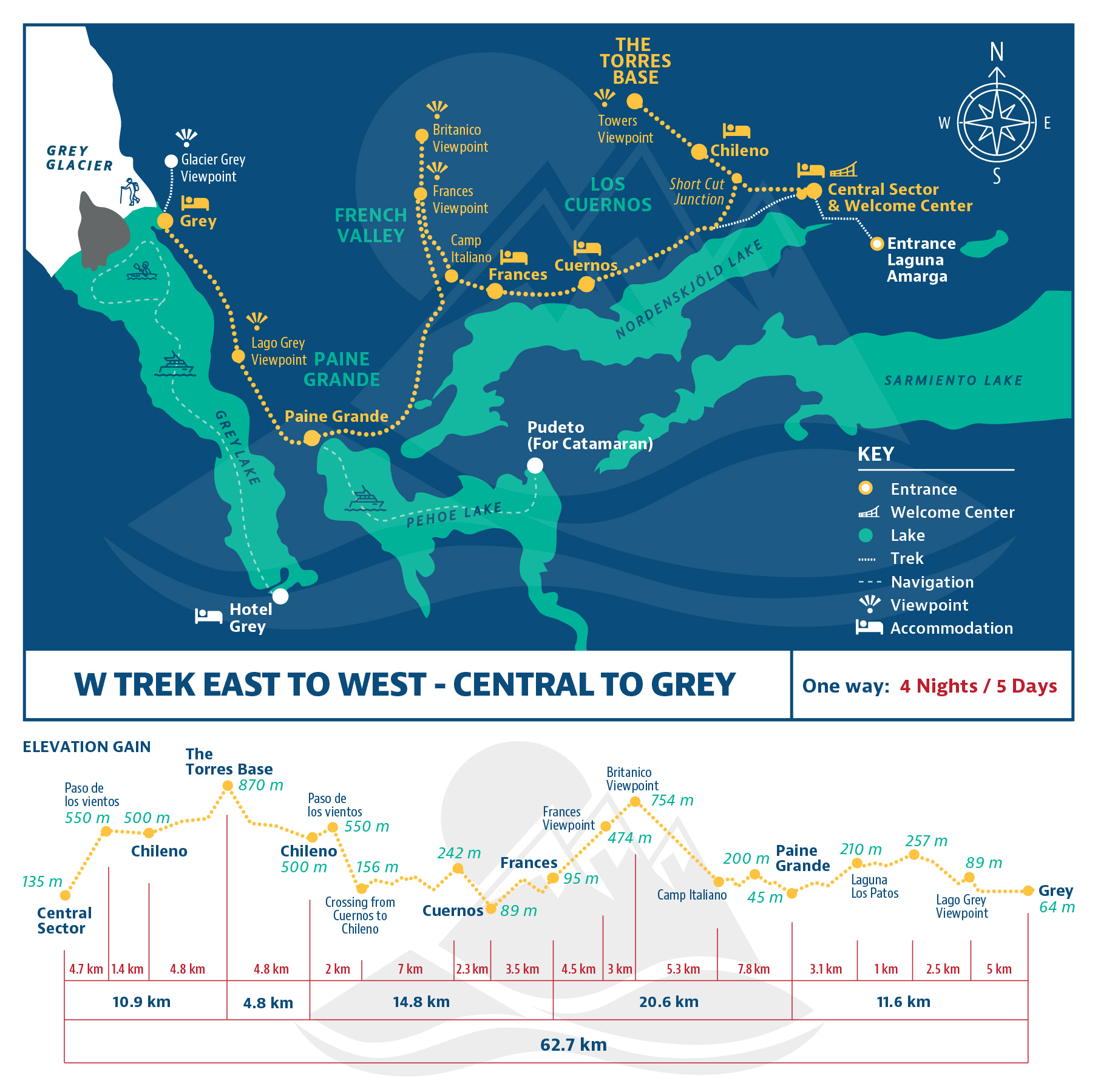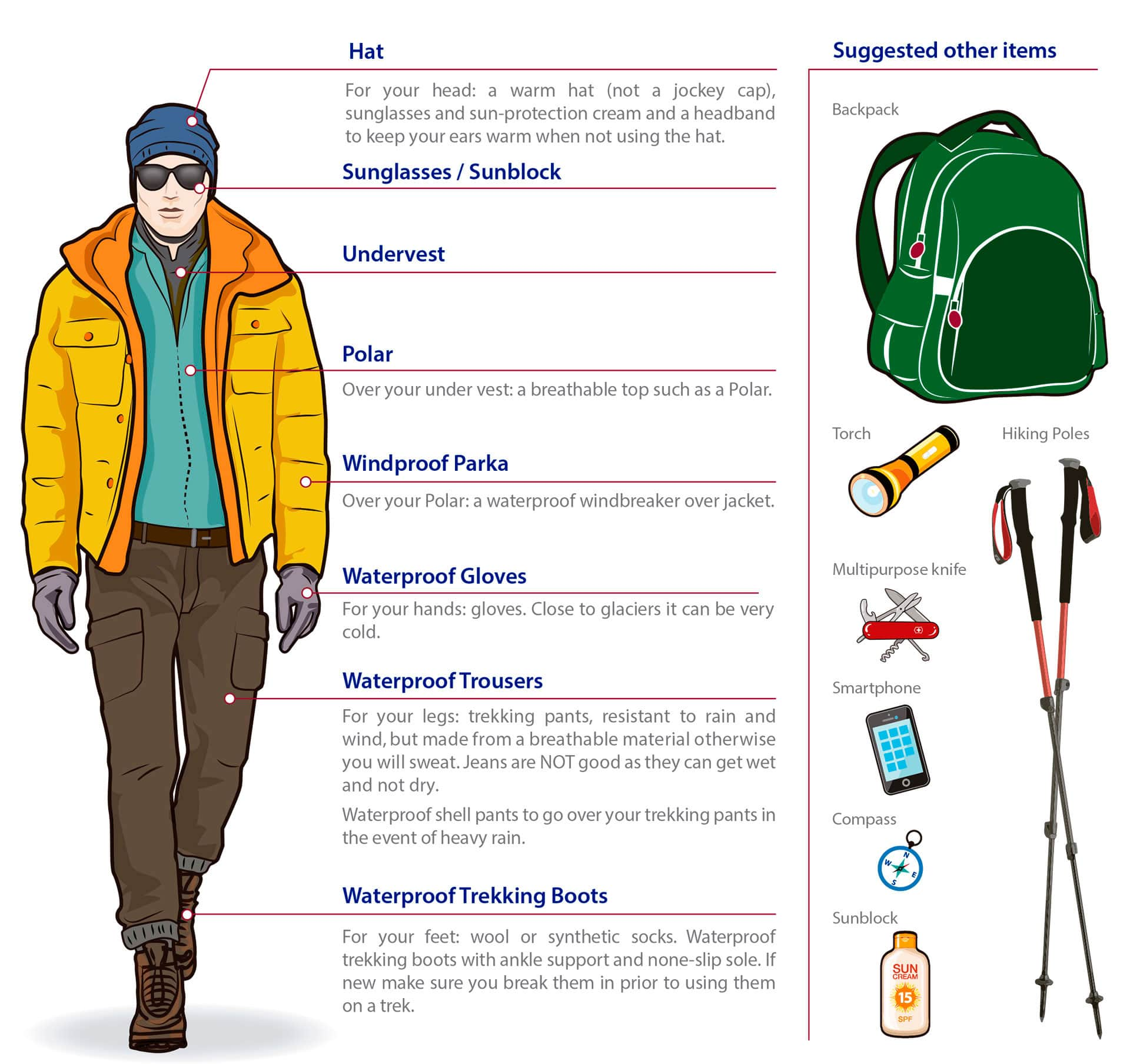Full W Trek Hiking Description
The W Trek
Suggestions and Info for When you Hike the W Trek
Trekking Poles
Certainly, if you have them, it is a good idea to take trekking poles with you. Specifically, they help a lot with preserving walking energy and are useful in certain circumstances as an extra source of support.
Waterproof
Having waterproof outer garments and footwear is a must.
Food
All things considered; our Torres del Paine W Trek all-inclusive programs will include three meals a day. For example, and in this order: Cooked Dinner, Breakfast and a box lunch to go. In addition, there will be liquids by way of water and juices. However, although you will also find snacks in the box lunch, you may wish to add your own snacks to nibble on during the hike.
Other Items
Ear Plugs
It should be noted that in order to help get a better night’s sleep in refugios, where there are other people, perhaps snoring, silicone ear plugs should help.
Electricity at the Refugios
Above all, you need to consider that you will be in the wilderness, in remote areas. Therefore, do not expect home comforts at refugios such as charging points for phones and computers. By the way, the electricity in Chile is 220v.
Binoculars
Another key point is to bring some binoculars, they will be useful for really zooming in on any wildlife you spot.
Wi Fi
Once in a while Wi Fi will be available at some refugios, but do not depend on it.
Safety
Above all, you will be responsible for your own safety whilst trekking. Therefore, you need to be sensible and very careful whilst walking. For example, if you end up with a sprained ankle, or broken leg, you could be waiting for an extremely long time for help. Moreover, this could be very serious if you happen to be out of sight of other trekkers, so walk at a safe pace for yourself.
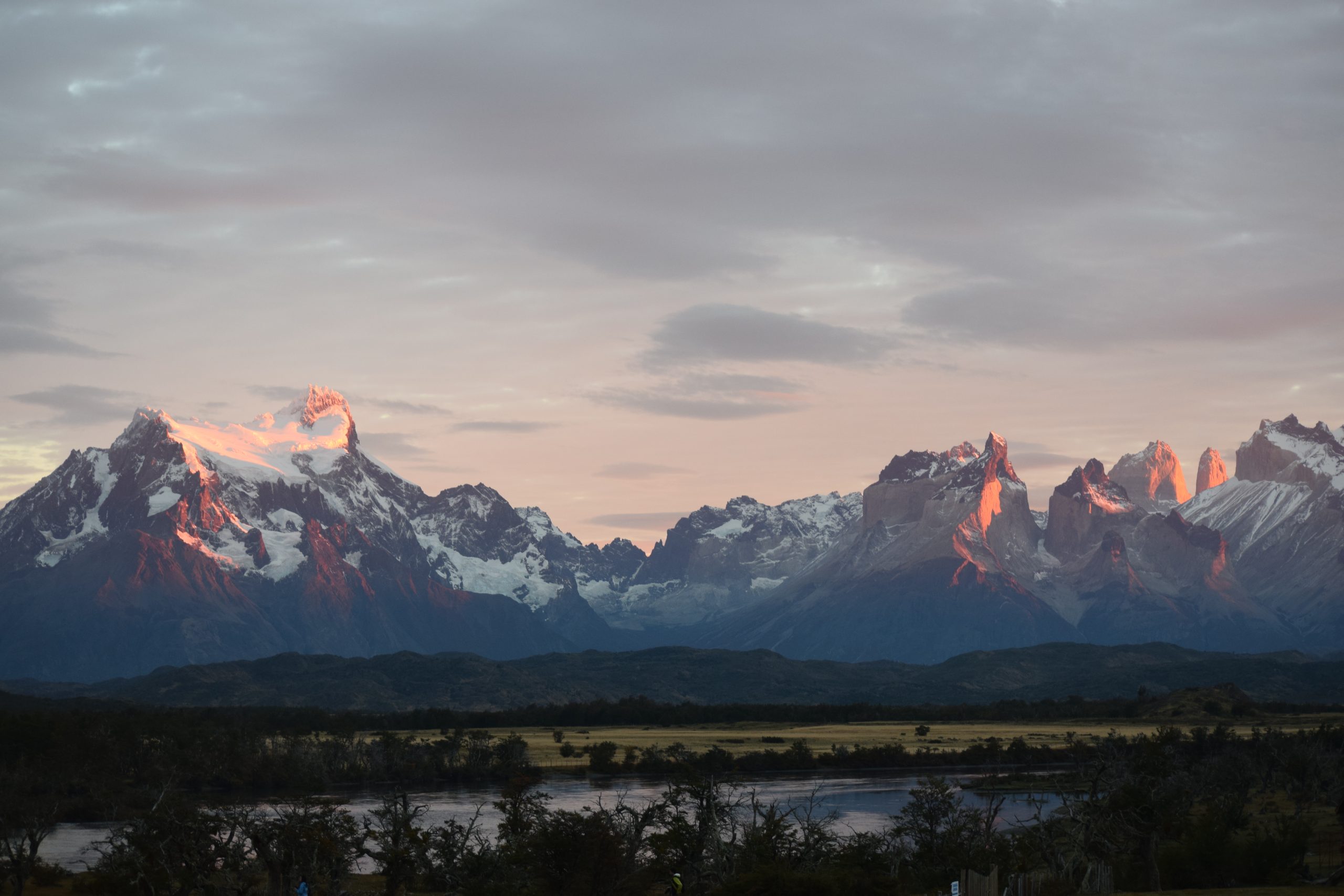
Here is a Full W Trek Hiking Description from Start to Finish
W Trek Accommodation
Before we get started let’s explain and define the different types of accommodation on the W Trek trail.
At the eastern end, near to the Welcome Centre is the Refugio Central and Premium Camping Central. There is also the ECO Camp and the Hotel Las Torres.
Half way up the trail, on the way to the Torres Base, starting from the Welcome Centre area, is Premium Camping Chileno.
After doing the Torres Base and heading west from Chileno, or from the Welcome Centre sector is Refugio Cuernos where there is also Premium Camping and Private Cabins.
Slightly further along from Cuernos is Refugio Frances and Premium Camping Frances.
Further west is Refugio Paine Grande, together with Standard Camping, and finally, at the western extremity of the W Trek is Refugio and Standard Camping Grey.
Accommodation Types
What is Premium Camping? – This is a superior category of tent pitched atop a high-raised platform. This provides for a warmer, over night experience as well as enables the wild fauna to roam around underneath. Premium camping is only available at: Central, Chileno, Cuernos and Frances (also at Seron – on the full Circuit trek). Bathrooms are communal shower rooms with W.C. facilities, segregated into male and female.
And What is Standard Camping? – This is a “regular” tent pitched on the ground. The places with standard camping are Paine Grande and Grey (as well as Dickson and Perros on the full circuit trek). Bathrooms are communal shower rooms with W.C. facilities, segregated into male and female.
Refugio
What is a Refugio, or Hut? – A Refugio or hut (the same thing) is basically a hostel offering dormitory rooms filled with double-decker bunk beds, usually with a 6-person capacity. Bathrooms are communal shower rooms with W.C. facilities, segregated into male and female.
And What is a Hotel? – This should be obvious, but in line with the above, a hotel offers private rooms for sleeping and usually, private, en-suite bathrooms.
What is ECO Camp? – This is an ecological “glamping” camp offering dome-shaped accommodation modules ranging from two-person standard level, to superior level and suite level. The standard level guests need to use the communal shower and W.C. rooms, whereas the superior and suite level domes have their own, private bathrooms. However, staying here requires a minimum night stay under an all-inclusive program with guided W Trek hiking.
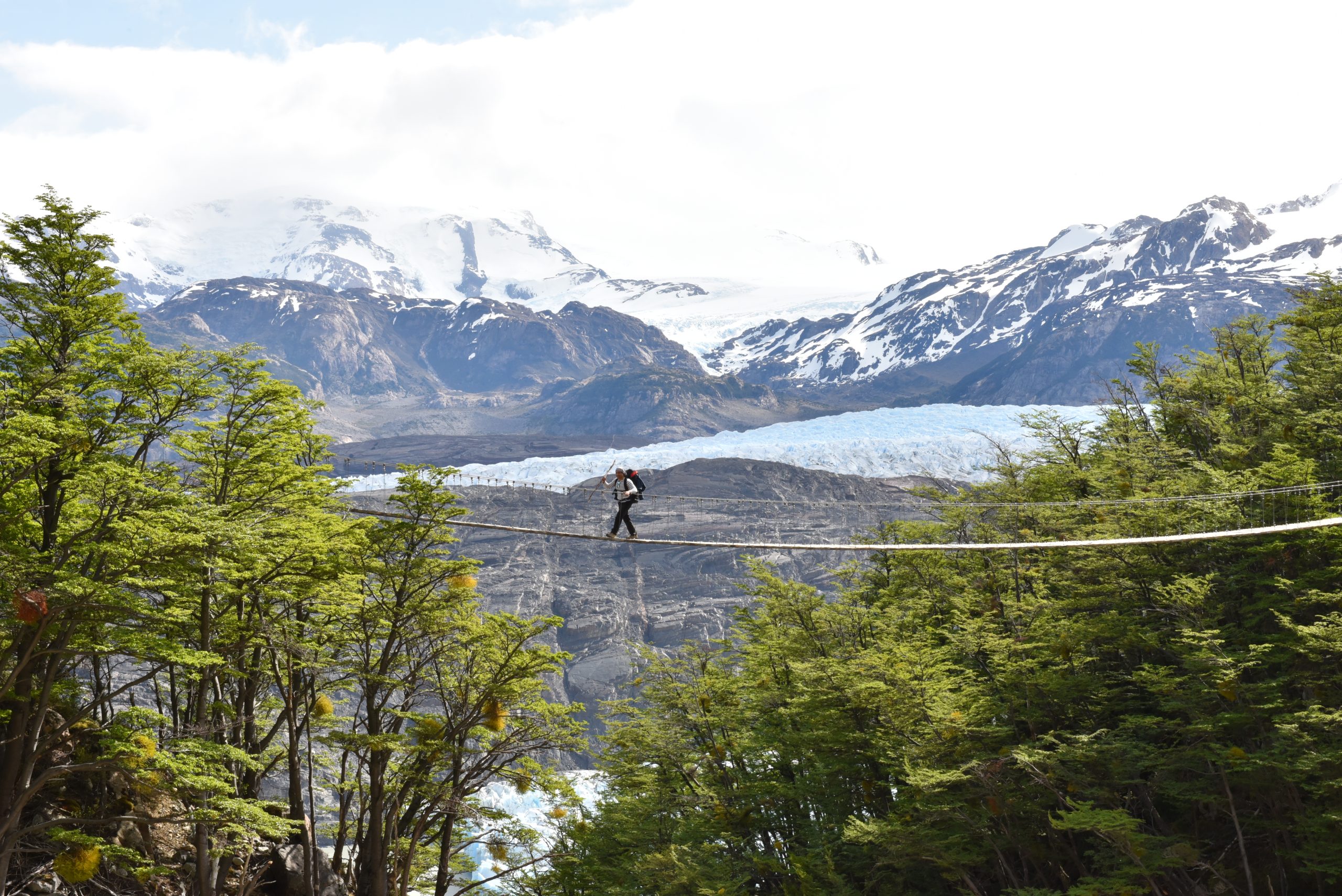
The Actual W Trail Trek Hiking East to West
DAY 1 – The Torres Base
Starting from Puerto Natales, the closest village to Torres del Paine, you will have stayed overnight at a hotel. Therefore, today you will begin the journey into one of the most impressive natural, geographic wonders on planet Earth! In the fist instance you need to get to the local bus terminal, called Rodovia here in Puerto Natales. Alternatively, the specialist operator Experiencechile.org will offer a private transfer directly to the Torres del Paine Welcome Centre.
In the event that you are taking the regular bus, it will depart at 07:00hrs. However, there is a later bus that departs at 14:00hrs. Therefore, in the event you fly into Puerto Natales early in the morning you can then go into the park the same day. In both instances the bus will arrive to Laguna Amarga.
Park Entry Tickets
Here is where the CONAF ranger control park entrance is located and where you will need to show your Torres del Paine Park entry tickets. If you have bought from ExperienceChile.org under an all-inclusive W Trek itinerary, the regular bus and park entry tickets will have been included and pre-bought for you.
Laguna Amarga
At Laguna Amarga you will then board a shuttle (minibus), that will take you a few klms to the Welcome Centre. At the Welcome Centre is where you can obtain useful information and book a storage locker, if required. In addition you should also receive a Welcome Kit. This will include a water bottle, a personal, brand new, inner sleeping bag liner and a small towel. However, this is only offered to those who have booked an all-inclusive W trek with Experiencechile.org .
First Night
From the trail head at the Welcome Centre to Torres Base and back is a distance of around 22km, and will take the average hiker about 9hrs to complete.
However, from Chileno to the Base is 4.8km one way, taking most people 2hrs up and 2hrs back, which is why most people prefer to stay at Chileno for this part of the trek. To hike from the Welcome Centre to Chileno will take abut 2.5hrs, mainly up hill. However, it is 2hrs from Hotel Las Torres.
At Chileno
Most people will have booked one of the premium tents located at Chileno. Initially, the trail from Hotel Las Torres is up hill, meandering and steep, also without much vegetation. Eventually you will arrive to the corner of the Ascensio Valley, called “Paso de Los Vientos”. However, once past the corner the trail descends down for about 300 mts until you get to Chileno. At Chileno you can drop unnecessary bags before continuing up to the base.
Optional Short Rest
Maybe after a short rest, you will then continue hiking, immediately crossing over a footbridge spanning the fast-running Ascensio River. Once the other side of this bridge the trail enters a forest and begins to ascend. In short parts the path will meander up steeper parts, but also flatten out. In the forested sector, hiking the trail feels more like a walk through a wood on a Sunday afternoon!
The Glacial Moraine Sector
However, eventually you will come to the end to the forested sector and almost suddenly be hit with strong daylight as the tree canopy gives way to steep, rocky, glacial moraine. It should be noted that from this point the trail heads “left” and begins a steep and in parts, narrow, ascent between large boulders, over smaller rocks and past wild-growing vegetation. The path all the time winding left and right, finding space viable enough for a person to walk through. Considering the entire W Trek, this sector is considered to be the most challenging. It will take one hour of active effort, navigating this stretch from exiting the forest to arriving to the Torres Base.
After the Torres Base
Having achieved your goal, you will then trek back to Chileno, downhill all the way, and bed in for the night.
However, some of you may have booked a first night at Hotel Las Torres, or Refugio or Camping Central, even the ECO Camp, which is close to the Welcome Centre. In this case you will hike all the way back down to one of these places, downhill all the way, and from the Torres Base back down to Hotel Las Torres is about 4hrs, and on to Central or ECO Camp, about another 30mins. Therefore, the Torres Base trek, from the Welcome Centre area up and down will take about 9hrs.
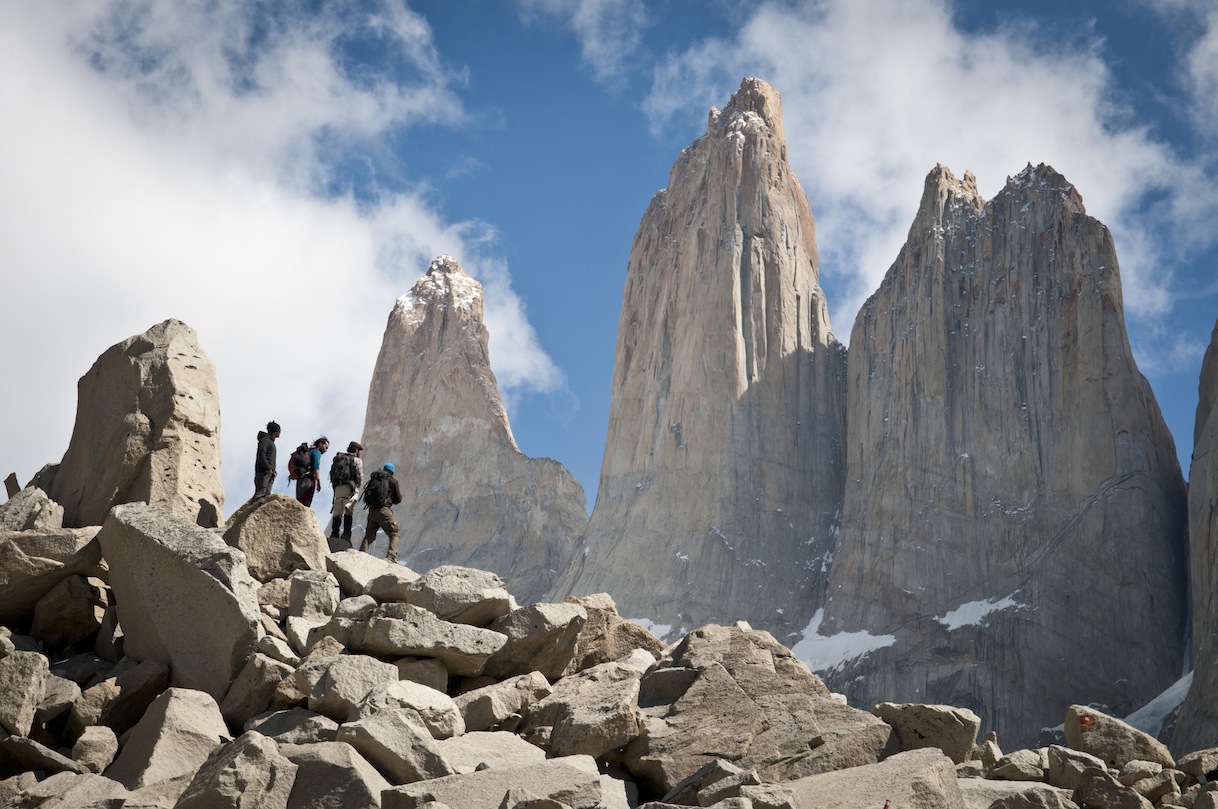
DAY 2 – Pre French Valley
From Chileno, or from Hotel Las Torres the trek time to the next point of accommodation ie Cuernos will take most people 5hrs to cover a distance of 15km. However, if you are on the W All-Inclusive program you will be booked into Frances, which is a further 1hr or so along the trail from Cuernos. This sector of the trail is considered to be mainly level.
After a good night’s sleep and breakfast, the refugio (or hotel) will pass to you a box lunch. This will contain (can vary) a sandwich, fruit, cereal bar and juice for your consumption during today’s hike.
Starting from Chileno
From Chileno the trail will be slightly uphill for about 500mts. Thereafter, it will be downhill for about 2kms before flattening out near Lake Nordenskjold. From this point the path will head west and mostly follow the lake with very manageable ups and downs.
Eventually, after about 5hrs from Chileno, also about the same time from Central, you will come across accommodation at Cuernos. At Cuernos is the refugio, premium camping and private cabins. Experiencechile.org can arrange accommodation here, however, in the all-inclusive W Trek itinerary programs the trail accommodation is usually at Frances.
Second Night
So, from Cuernos, the trail continues west and after about 1hr and 15mins you will arrive to the accommodation at Frances where there is a refugio and premium camping. This is where you will likely be sleeping for tonight.
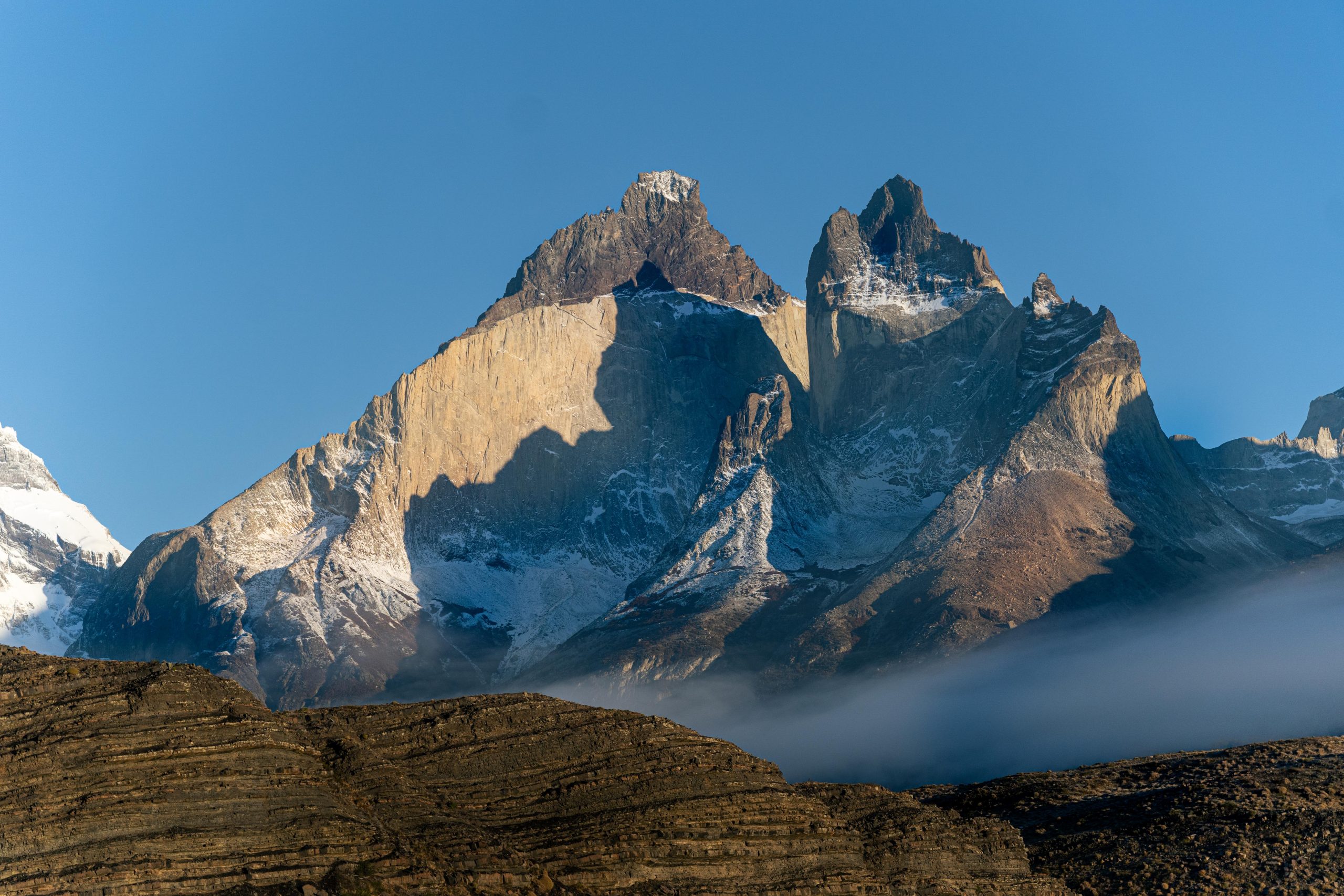
DAY 3 – The French Valley
The Hiking Day from Frances
Once again, after a good night’s sleep, chatting and drinking with fellow hikers, you will have breakfast and be handed a box lunch. Today is a long hiking day and also, weather permitting, one of the most visually spectacular.
The trail will continue in a westerly direction and after about 1hr 15 min you will arrive to a place called “Camp Italiano”. Here is a CONAF rangers hut. Beside it is a camping area where those who have come here with their own tents can pitch them. Such “self camping” means that you are “on your own” so to speak, as in you bring your own tent, your own food and all the gear. This can be a heavy burden when hiking from place to place each day.
This area also marks the entrance into the French Valley, known for its majestical splendour of hanging glaciers that hold on tight to the high, surrounding mountain sides.
French Valley Entrance
The distance from Frances to the entrance of the French Valley is 4.5km and takes around 1hr and 15mins to walk.
From the French Valley entrance to the end of the French Valley is 5.5km, uphill. This distance will usually take around 2.5hrs to hike, not forgetting the same time and distance for the return. In other words, from the entrance to the French Valley to the end (where Camp Britanico is located – only used by expert rock climbers) and back, you will need to allow 5hrs.
However, many hikers prefer to only go half way into the French Valley to where the view point is located. Getting to here and back will cut the overall French Valley return hiking time down to about 2.5hrs from the entrance and back.
After the French Valley
Once back at the French Valley entrance you will be going back to Frances for a second night. On the other hand, if you turn right, you will be heading west and on to Refugio and Camping Paine Grande. From Camp Italiano to Refugio Paine Grande is 7.8km one way, which takes most people about 2.5hrs to hike.
If you start at Frances and do the full French Valley hike and return to Frances the day will take around 9hrs. On the other hand, if you only go to the view point and back the day will take about 7hrs. These times will be the same if you end up heading on to Paine Grande at the end instead of returning to Frances.
Night Three
Although your night three may be a second night at Frances, we will talk about tonight being at Paine Grande. Here, there is the largest refugio on the W Trek trail and a vast ground area for standard, but serviced camping. What does this mean? Standard camping consists of traditional tents pitched on the ground, whereas until now, Premium Camping as been superior category tents that are were pitched atop a high-raised platform.
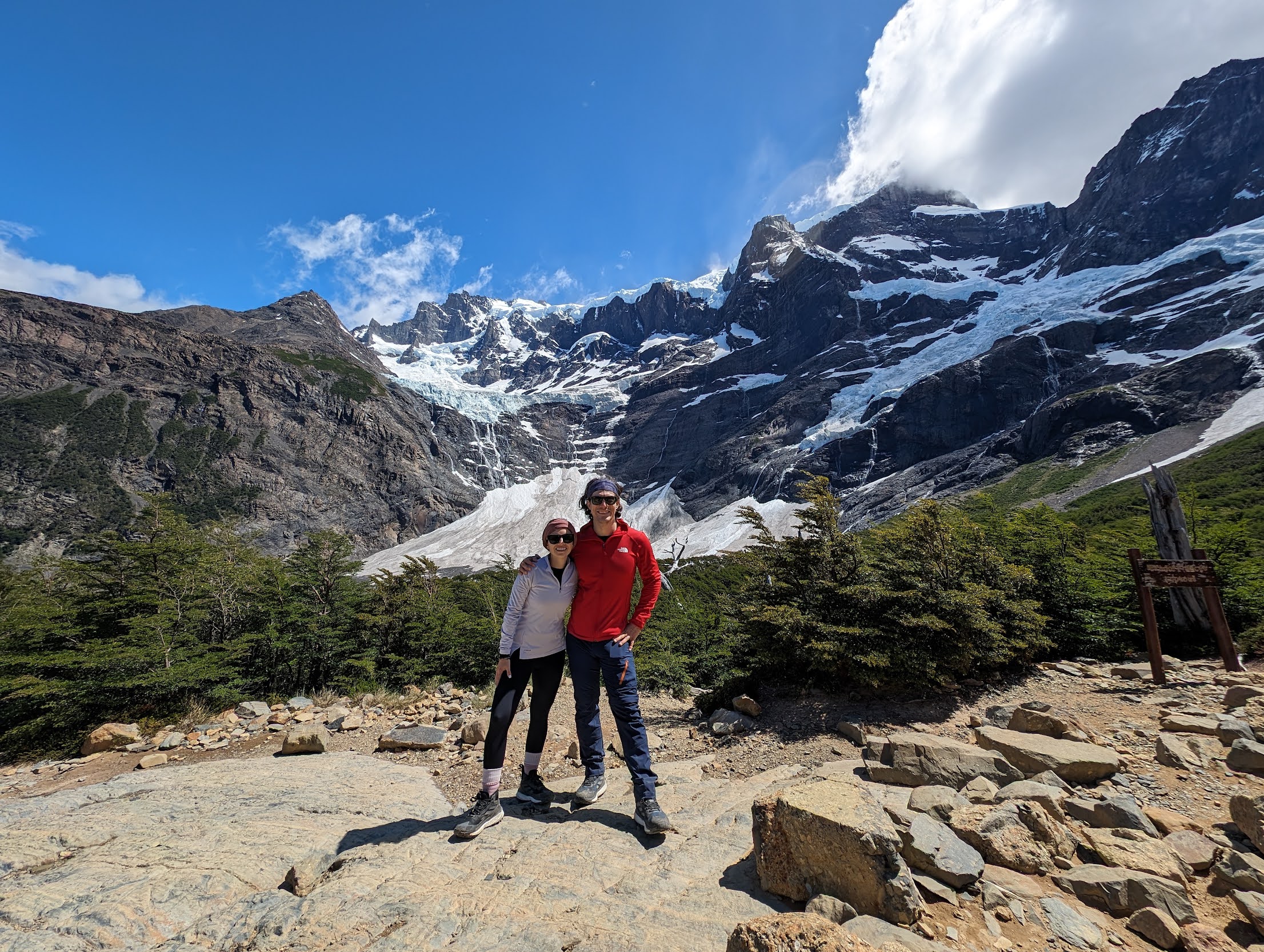
Day Four – The Grey Leg (or not) – Glacier Grey
From Paine Grande to the Grey View Point (Mirador) is 4km, which should take about 1hr and 15mins to hike. From here it is a further 6.6km to get to Refugio / Camping Grey and that will take around 2hrs and 15mins walking.
The most “difficult” part of this hike is the short, meandering path that starts from Paine Grande that climbs up the hill directly behind the refugio. However, once at the top you will reach a flat, wooded plateau. Then, after about 300mts this pretty sector will then open out to display a magnificent view over Grey Lake and, on a clear day, the Glacier Grey in the distance. It sould be noted that this view is stunning when taken in from the Grey view point.
Three Options
Be aware that once you arrive to Paine Grande you have three options.
One option is to “call it a day” and depart off the trail by taking the Catamaran across Pehoe Lake to Pudeto.
Another option is to bed down at Paine Grande and depart the next morning, early, via the same catamaran route, or hike on to the Grey Look Out, which is about 2hrs up hill, and then back to Paine Grande, and then take the catamaran out.
However, the third option is to plough on and hike 4hrs to where Refugio and Camping Grey are located. As with Paine Grande, the refugio here offers dorm rooms with bunk beds, 6 people per dorm, or standard, but serviced camping.
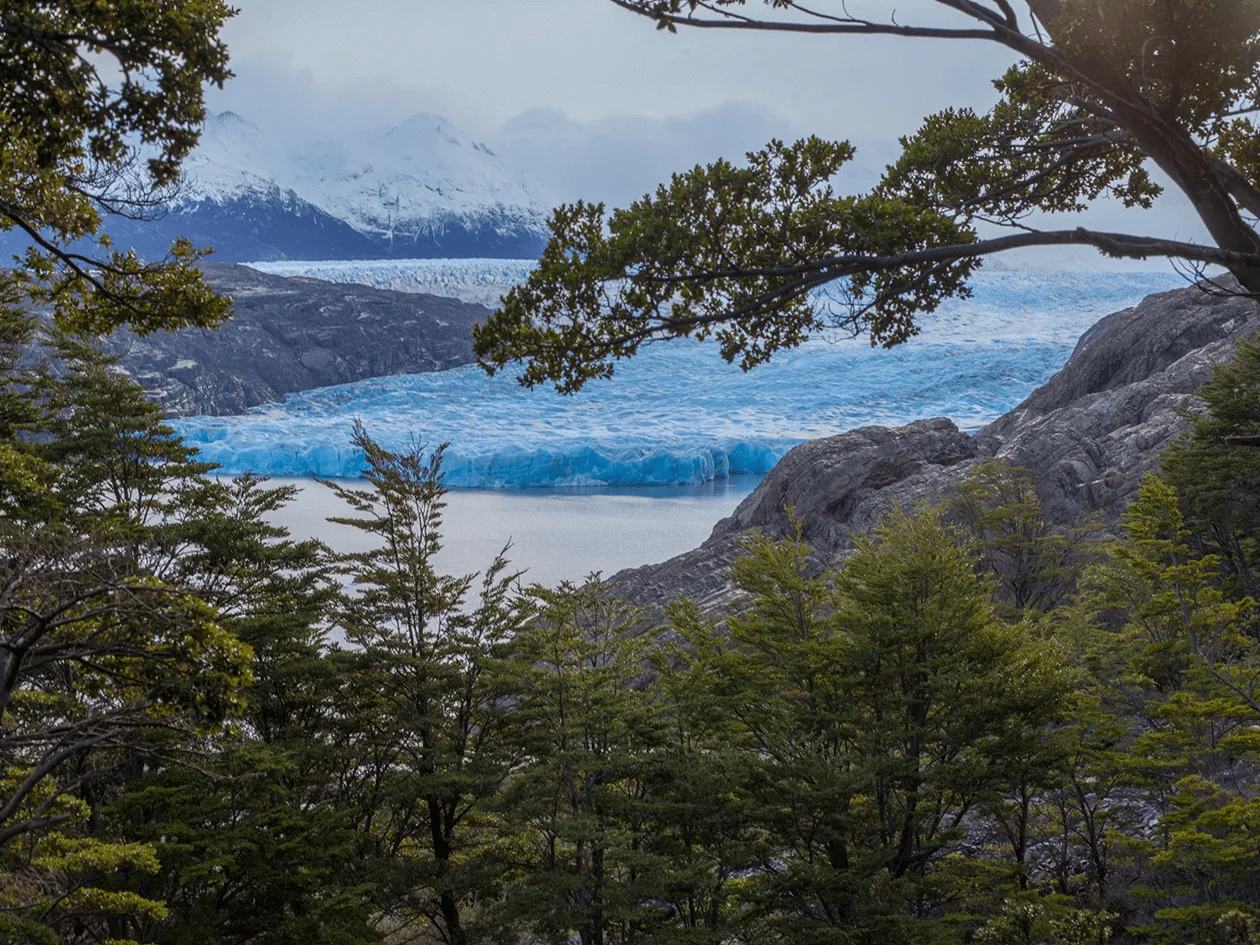
Activities from Grey
If you make it to Refugio / Camping Grey you will be able to do any of these activities as long as you have an advanced reservation and it has been pre-paid. Experiencechile.org can arrange this for you as long as you have booked the W Trek with them.
Navigation Grey - will take you past the glacier (Grey 1 and 2, NOT 3) and a handy way to get off the trail. After a walk along Grey beach you arrive to PINGO and a regular bus will take you back to Natales or a Private Transfer. The regular bus will arrive to Natales at around 22:00hrs, whereas the Private Transfer can get you to Natales before 18:00hrs.
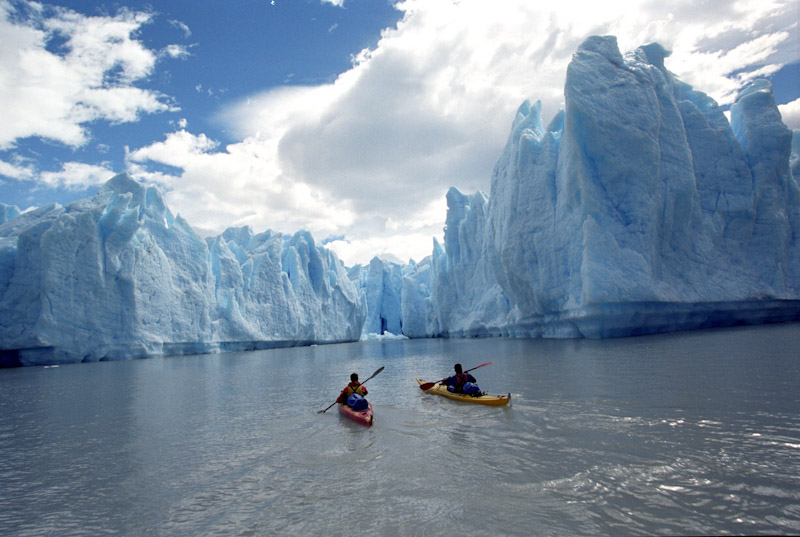
End of the W Trek
So, you will have completed one of the worlds iconic hikes and its time to depart. Leaving Park will be via one of the routes mentioned in the text above and you will be back at Puerto Natales, likely for a final night. However, some of you may wish to go straight over to El Calafate and if you do experiencechile.org can arrange a direct, private transfer. The alternative will be a regular bus from Puerto Natales the next morning.
Ideas
Apart from the great hiking in Torres del Paine, how about considering mixing in a few nights at at one of the hotels, or top-end, luxury lodges or even an authentic Patagonian estancia? Not to mentioned adding hiking at El Chalten and seeing the massive Perito Moreno glacier. If you have the money, and yes, unfortunately coming to Patagonia is not low cost anymore, experiencechile.org are the people to sort it all out for you. Ah, then, of course there is even Antarctica!
See these links to the specialist Experience Chile Torres del Paine and W Trek web site: Torres del Paine Patagonia, Experience it Here and for the W Trek: Torres del Paine W Trek, this is the place.
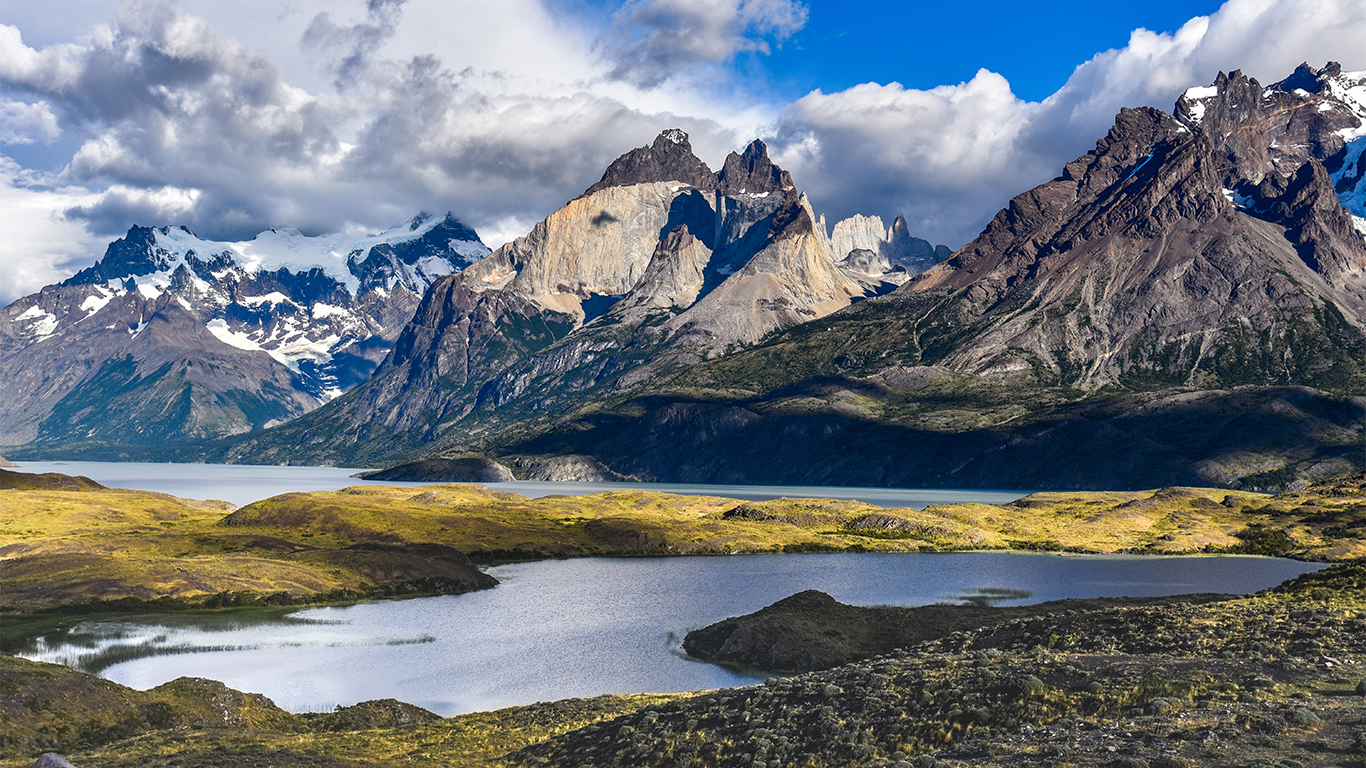
The Lago Pehoe Catamaran Ferry Operates Between
Refugio Paine Grande and Pudeto
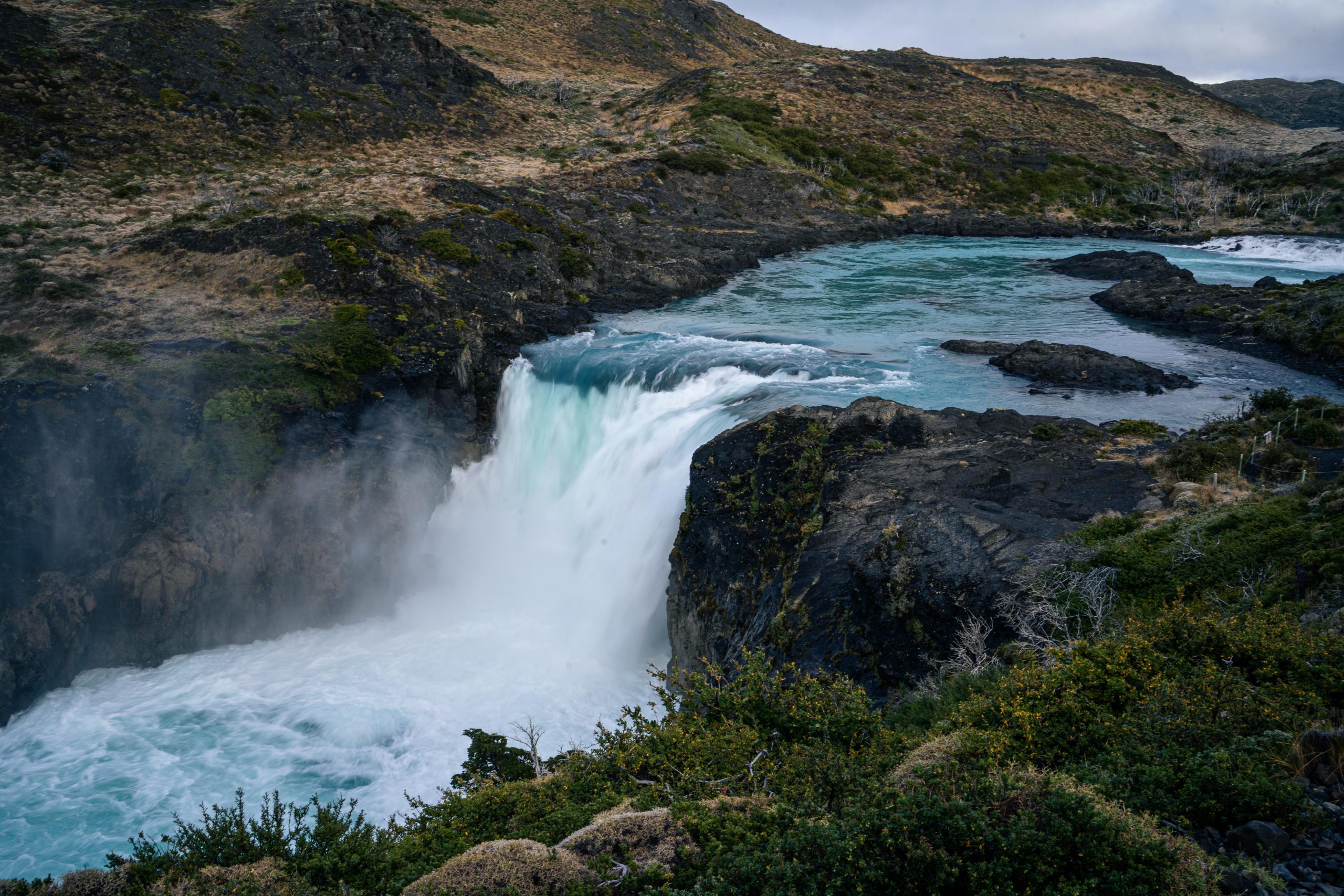
Using the Pehoe Catamaran
You will need to use this ferry service to go between Pudeto and Paine Grande, with an approx 25min crossing. From Paine Grande you can hike to Grey 4hrs, or do the French Valley day hike in 9hrs.
In addition, there is a car park at Pudeto. Also, at both Pudeto and Refugio Paine Grande there is a cafe and restaurant respectively that serve drinks and snacks.
Most important to note is that this service is subject to local weather conditions and can be delayed or cancelled.
Tickets in Advance
(Included with an All-Inclusive W Trek Itinerary Booked with experiencechile.org)
or you can buy direct here: https://hipsur.com
Moreover, one backpack is included, but there is an additional cost of around USD10 per extra backpack up to 50Kg.
What clothes should I pack for the W-Trek?
Suggestions on What to Pack in Your Luggage
Most important is what we aim to do here is advise you on what to pack in your suitcase (or backpack) and bring with you when coming to any part of Patagonia, be it land or sea.
Moreover, the weather here has one constant, which is change! It is often windy, and it can rain or offer beautiful sunshine within the space of an hour. Therefore, please bring the right clothing to keep yourself dry and warm. Further below there is a graphic detailing what you should, ideally, bring with you.
Layered Clothing is the Answer
At least try to bring LAYERS of breathable clothes that can be taken off or put on easily to adapt to any change in weather and as you heat up and cool down on a trek. For example, cotton undershirts are NOT recommended – see below.
Above all, travel light. For example, take a day backpack for the trek days.
Suggested Clothes to Wear
As an illustration, please see our dedicated “Clothes to Bring” illustration via this link and further below.
On Your Feet
To begin with you need “hiking boots”. In other words, boots that are durable, but strong and especially WATERPROOF. In addition, if you have gaiters also bring these. Above all break-in any new boots well before arrival.
Also, a pair of flip flops for indoors. It should be noted that the refugios demand that you take off outdoor footwear when you enter the building.
By the same token, bring socks that are for hiking use, that fit well within your hiking boots, and maybe 3 pairs. These socks should be a little thicker than your normal socks.
Over Your Legs
For the purpose of practicality, hiking pants as well as a waterproof outer shell to go over your hiking pants if it rains are the best option. In addition, optional underwear such as synthetic leggings to go under your trekking pants are also useful if it gets cold.
For Your Upper Body
Most important, here you need to have “layered” clothing. This is because you get hot when trekking, therefore you need to be able to take layers off as well as put them on when you cool down.
Ideally, you will need a long sleeved under vest. This should be in a synthetic material. Why? Because you will sweat when you trek, and the synthetic material will dry more quickly than cotton material. If you are trekking in the summer and it is hot, you may not need to wear this undervest but take one anyway in case the weather changes to be cold.
In addition, over the under vest, you will need a shirt, long sleeved ideally. Therefore, this can be considered to be a second layer.
Covering your second layer you need a fleece or similar, ideally with a front zipper so you can undo it or close it up with ease.
Finally, to cover everything you will need an outer jacket with a hood, and this needs to be waterproof and if is not, take another outer shell which is waterproof.
Around Your Neck
It should be noted that even if the rest of your body is covered and snug, bring a scarf or neck muff – this is very useful if it is cold, and easily taken off if it is hot.
Covering Your Hands
Most important, don’t forget your gloves! These are required specifically for when you are close to ice, like Glacier Grey or even at the Torres Base, where the air is cold. Again, waterproof is the way to go.
On Top of Your Head
Bring a head band to cover the ears – because they can get very cold. In addition, try to bring a hat like a woolen “beanie”.
Protection from the Sun
Most important: Pack the sunscreen cream.
For When you are Thirsty
Also, bring a water Bottle.
To Protect Your Eyes
Equally important, pack a pair of sunglasses. The light reflection from glaciers, snow and just brightly lit days can be strong.
Other Useful Items to Include in Your Luggage
Must be remembered: Portable USB Charger
Of course, a Travel Towel
Also, to help with sleeping when in a shared accommodation environment: ear Plugs, eye mask and maybe sleeping pills.
By all means bring both Cash and a Credit Card
Most important: Passport for check-in and TOURIST ENTRY VISA – given to you when you pass through Chile immigration.
